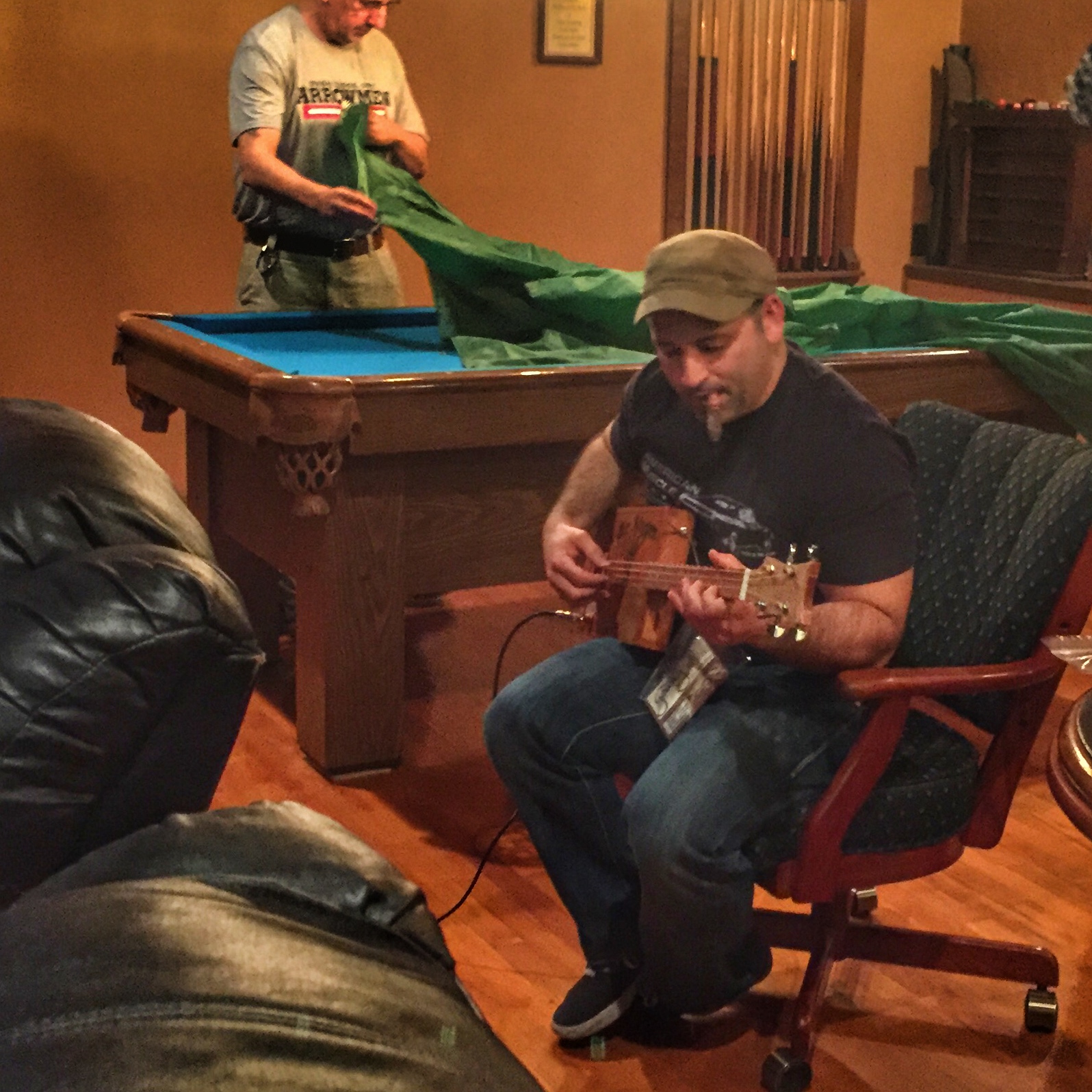Over the past year or two, we have seen an explosion in the way cigars are marketed. In addition to tying a persona to the brand, some manufacturers are giving you an inside look into what makes up their product.
Two great examples of this can be seen during presentations by Jose Blanco, of La Aurora, and Tim Ozgener, of CAO, when they put on blending seminars at cigar shops across the country. Both companies allow the consumer to smoke the components that make up the blend, which allows us to see just home complex the process is.
We also got to see first hand how cigars were rolled during events with Sam Leccia, of Nub and Cain Cigars. These events not only showed how involved rolling a cigar was, often times these events gave us the opportunity to try it for ourselves.
This level of consumer education does wonders for the way we view cigars and how we come to appreciate them. The purpose of this article is give you a little insight into each piece of the cigar so that you can have a better understanding of their purpose
General Makeup

Before we take a closer look at the components of a cigar, it is import to know the basic terminology used to describe which end goes in your mouth and which end is set on fire.
I know this may seem strange, but it is not all that uncommon for a first time cigar smoker to light the wrong end of their finely crafted cigar. This becomes increasingly more prominent when the cigar in question features something out of the ordinary, such as a closed head and foot.
At this stage of the article, we are going to focus on two areas of the cigar. The first of those areas is the head. This is the end that is placed into your mouth. Under most circumstances, this is the end of the cigar which will be closed and requires cutting before smoking.
This end of the cigar often times displays a band, or label, of sorts. These bands are oriented in the same manner for consistency among cigars. If you are holding a cigar with a pre-clipped head, you can use the band to help orient you. The top of the graphic on the band will be closest to the head.
The second part of the cigar is the opposite of the head, the foot. This is the end of the cigar that will be burned. In some cases this end may be closed, but those occurrences should be rather rare. In some instances the foot will be left uncut and appear shaggy. You do not need to clean it up, simply set it on fire the way it is, just be careful hot coals do not fall onto anything important during lighting.
Now that you have a basic understanding of which end is which, you will be on your way to Selecting and Using Cigar Cutters and Lighting Your Cigar, in no time at all. I find reading about cigars much more enjoyable if I am smoking one at the time, so please feel free to light on up.
Cap
The cap of a cigar is made up of left-over wrapper leaf and can be formed in a variety of ways. Regardless of how the cap is formed, it always serves the same purpose, to lock the wrapper in position so that it does not unwind during smoking. There are three types of caps which are commonly found on cigars, those types have been outlined below.
Flag and Cap
The Flag and Cap method of capping a cigar utilizes the wrapper leaf of the cigar in a way which does not require additional pieces to be applied to the head of the cigar. After the last wrapping of the wrapper is complete, the leaf will be trimmed to rough size and shape. After the required size and shape are achieved, the torcedor will then shape the remaining tobacco so that it can be applied and neatly cap off the head of the cigar.
Single Cap
The Single Cap is probably the most common way to finish off a cigar. Unlike the Flag and Cap method, a single cap is a completely separate piece of tobacco which is applied to the head of the cigar. This piece of tobacco is cut with a circular blade to form a round plug. This plug is then applied to overlap the last wrap of the wrapper leaf and lock it in place.
Triple Cap
Much like a Single Cap, the Triple Cap is made up of tobacco left-overs from the wrapper application. Instead of using a single cap, this method uses multiple pieces to finish of the cigar. This is a traditional method which is often used on boutique cigars. This method of cap application requires more skill and time to apply properly, as a result the cost of cigars with this feature is generally higher than those with a single cap.
Wrapper:
The wrapper of your cigar is arguably the single most important element. Some believe that as much as eighty-percent of a cigars flavor is derived from the wrapper leaf alone. I personally believe that number to be true in some circumstances, but certainly not all.
Because the wrapper makes up the outer most portion of your cigar, it is best if it has a pleasing visual affect. For this reason, superior grade tobacco is used in this application. To increase the visual appeal, manufacturers will box like wrapper shades together to make a uniform appearance within any given box of cigars.
Before the wrapper is applied, the leaf is oriented so that the thicker portion of the veins will be placed against the binder of the cigar. This is done so that the cigar feels more refined in the hand. In some instances, the veins will be flattened out by simply rolling over them with a tool before the leaf is applied.
When applied, the wrapper will be situated so that it makes three wraps around the cigar before it is trimmed and capped off at the head. This is done to achieve the proper proportion of wrapper leaf needed for the cigar to burn properly. Too many wraps will lead to too much wrapper leaf and problems with said leaf burning evening.
Binder
Binder is a piece of tobacco that is used to bind the filler tobaccos and is applied much the same way as the wrapper. After it is applied, the cigar is placed into a mold to force the cigar into the desired shape. This portion of tobacco is generally a lower grade leaf than that used on wrapper. Any visual defects within this leaf will be covered up when the wrapper is applied.
Filler
When it comes to filler, there are essentially three types. Each type, or classification, of filler makes up a different type of cigar. A cigar that you may find in a package at your local gas station has a very different makeup than one you might find within your local cigar shop. The difference, for the sake of this article, is in the way the tobacco is cut.
Long Filler
Most of the cigars you will find within your local cigar shop are made up of long filler. This classification of filler is just as it sounds, long. When the blend is being put together, long filler will run from one end of the cigar to the other. There may be some smaller pieces inside the cigar but these pieces will be pulled from either end of the bunch to fill in an under-filled portion.
The video below shows the Entubado Method of bunching and gives you a visual of how long filler runs the entire length of the cigar.
Mixed Filler
When you are looking for a budget friendly cigar, one of the best places to look is in the Mixed Filler arena. These cigars are more affordable because they make use of some scrap tobacco left over from crafting long filler cigars. Because these cigars make use of scrap, the final cost is reduced. These types of cigars are often label as a Cuban Sandwich or Fumas.
Short Filler
If browsing through the walk-in humidor at your local cigar shop, you are unlikely to come across a cigar that utilizes short filler. In this case, the cigar is made entirely of scrap tobacco which makes for a very inexpensive final product. One of the advantages of short filler is that consistency is very high. Think of it sort of like dumping five single gallons of paint into one five gallon bucket. Once mixed, all of the paint is the same.
In Closing
I hope that this article has helped answer any basic questions you may have had about the makeup of your cigar. Before writing this article, I took the liberty of deconstructing an inexpensive cigar so that you could see the step by step process. To view those photo, take a look at the sideshow below.



Cool deal… Now roll that bad boy back up and smoke it!
I remember visiting a slaughter house the day after a huge steak diner…I feel the tears coming just like then.
Nice job Walt.
mango
Very informative! Even if you already know this stuff it’s instructive to watch it all come together.
Nice job Walt.
Walt- Great review man. Very obvious that you spent some time putting this together. As you mentioned, with consumer and public eduction people will be able to respect the art of cigars more and more. My opinion is bloggers (as you do here…) should do much more of the “educational” type blogs. If anyone ever has a question about how a cigar is rolled/made I’ll be linking them to this!
Good info adn video Walt. Can you do an article on the different wrappers (Habano, Maduro, Connecticut, etc…), fillers and binders and the different taste they give to a cigar?
Wow! AWESOMELY informative post. Thanks!